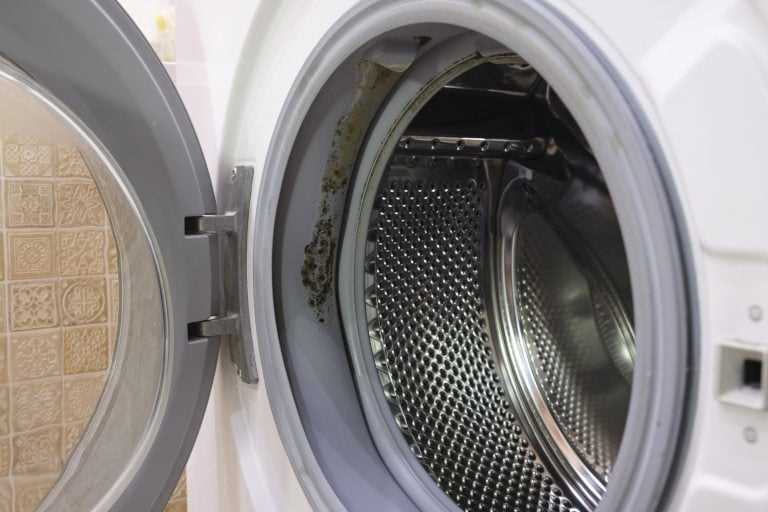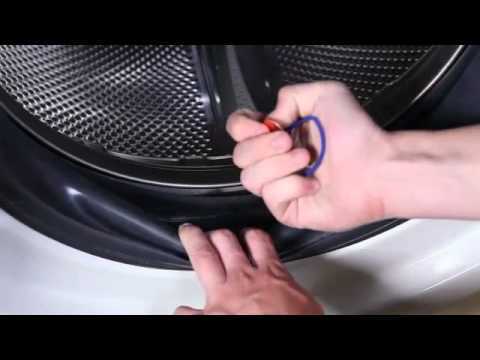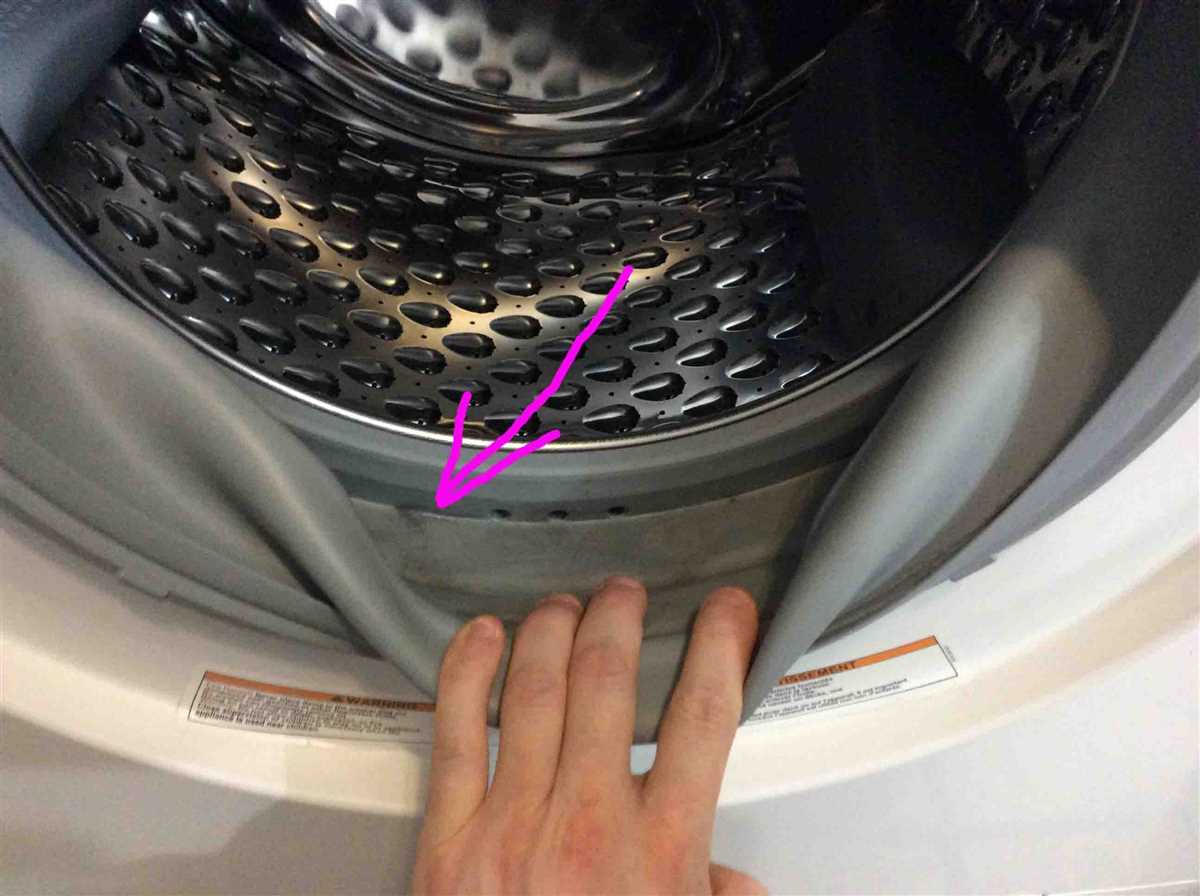




A washing machine gasket is an essential part of every washing machine that plays a crucial role in preventing leaks and maintaining the efficiency of the machine. A gasket is a rubber or silicone seal that is positioned between the drum and the rest of the machine to create a watertight seal. It acts as a barrier between the rotating drum and the outer casing, preventing water from leaking out of the machine during the wash cycle.
Without a properly functioning gasket, your washing machine can experience leaks, which not only waste water but can also cause damage to the surrounding area. A faulty gasket can also impact the performance of your machine, as water leaks can lead to a decrease in washing efficiency and increase the risk of electrical faults. Therefore, understanding and maintaining your washing machine gasket is essential for the optimal functioning and longevity of your appliance.
There are several types of washing machine gaskets, including tub gaskets, door gaskets, and detergent drawer gaskets. Tub gaskets are located between the drum and the outer shell of the machine, while door gaskets create a seal between the door and the drum. Detergent drawer gaskets, on the other hand, prevent water and detergent from leaking out of the detergent drawer during the wash cycle.
Regular maintenance and cleaning of your washing machine gasket are important to prevent the build-up of dirt, grime, and mold, which can compromise the effectiveness of the seal. It is recommended to clean the gasket regularly with warm soapy water and a soft cloth, paying extra attention to the folds and crevices where dirt tends to accumulate. Additionally, it is essential to check for any signs of damage, such as cracks or tears, and replace the gasket if necessary. By taking proper care of your washing machine gasket, you can ensure a long-lasting and efficient appliance that delivers clean and fresh laundry every time.
Importance of Washing Machine Gaskets

A washing machine gasket is a crucial component of any washing machine. It is a flexible seal that is placed between the outer tub of the washer and the main door. This gasket plays a vital role in preventing water leaks and maintaining the overall efficiency of the machine.
Preventing Water Leaks

One of the primary functions of a washing machine gasket is to prevent water leaks. As the machine fills with water during a cycle, the gasket ensures that the water remains inside the tub and does not leak onto the floor or surrounding area. Without a properly functioning gasket, water would escape, causing potential damage to your laundry room and creating a hazardous environment.
Maintaining Efficiency
A well-maintained gasket also helps to maintain the efficiency of your washing machine. It ensures that water does not escape during the wash cycle, allowing the machine to use the appropriate amount of water for each load. This not only saves water but also ensures that clothes are thoroughly cleaned without wasting excess water.
Preventing Mold and Mildew
The gasket also plays a significant role in preventing the growth of mold and mildew. Since gaskets are often exposed to water and damp conditions, they can become a breeding ground for bacteria. A properly maintained gasket, free of debris and residue, helps prevent the growth of mold and mildew, ensuring that your washing machine remains clean and hygienic.
Extending the Lifespan of Your Washing Machine
A washing machine gasket, when properly maintained and replaced when necessary, can significantly extend the lifespan of your washing machine. By preventing water leaks and maintaining efficiency, the machine can function at its optimal level for a longer period of time. This can save you money on costly repairs or the need for a new washing machine.
Regular Maintenance and Replacement
To ensure the effectiveness of your washing machine gasket, it is essential to perform regular maintenance. This includes cleaning the gasket regularly to remove any debris or residue, checking for any signs of damage or wear, and replacing the gasket when necessary.
- Regularly clean the gasket with a mild detergent and water solution to remove any buildup or residue.
- Inspect the gasket for any signs of wear, such as cracks or tears.
- If the gasket is damaged or worn, it should be replaced as soon as possible to prevent leaks and maintain efficiency.
In conclusion, a washing machine gasket is a vital component that ensures the proper functioning of your washing machine. By preventing water leaks, maintaining efficiency, preventing mold and mildew growth, and extending the lifespan of your machine, the gasket plays a crucial role in maintaining the overall performance and longevity of your washing machine.
Signs of a Faulty Washing Machine Gasket
If your washing machine gasket is faulty, you may observe the following signs:
- Water leakage: One of the most common signs of a faulty washing machine gasket is water leakage. If you notice water pooling around the base of your washing machine or excessive water on the floor after a wash cycle, it may indicate a gasket problem.
- Mold or mildew growth: A faulty gasket can lead to water accumulation in hard-to-reach areas of the washing machine, creating a perfect breeding ground for mold and mildew. If you notice a musty or unpleasant odor coming from your washing machine, it may be a sign of mold or mildew growth caused by a faulty gasket.
- Deterioration or physical damage: Over time, the gasket may wear out or become physically damaged due to frequent use or exposure to chemicals in laundry detergents. If you observe any visible signs of deterioration, such as cracks, tears, or brittleness, it may indicate a faulty gasket.
- Noise during operation: A malfunctioning gasket can cause excessive vibration or loud noises during the washing machine’s operation cycle. If you notice unusual noises, such as squeaking, rattling, or banging, it may be a sign that the gasket is not sealing properly.
- Poor washing results: A faulty gasket can lead to water leakage inside the washing machine, which can affect the overall washing performance. If your clothes are not getting properly cleaned, wet spots remain on garments after the cycle, or you observe detergent residue, it may be due to a faulty gasket.
If you notice any of these signs, it is important to address the issue promptly. Ignoring a faulty gasket can lead to further damage to your washing machine and potential water damage to your home. Consider contacting a professional technician to inspect and replace the gasket if necessary.
Maintaining Your Washing Machine Gasket
Maintaining your washing machine gasket is essential to ensure the longevity and efficiency of your appliance. Here are some key steps you can take to keep your gasket in good condition:
1. Regular Cleaning

- Wipe down the gasket after each wash cycle to remove any residue or dirt.
- Use a mild detergent and warm water to clean the gasket thoroughly.
- Pay special attention to the folds and crevices where dirt and grime can accumulate.
2. Check for Damage

- Inspect the gasket regularly for any signs of wear or damage.
- Look for cracks, tears, or gaps in the gasket that could lead to leaks.
- If you notice any damage, replace the gasket as soon as possible to prevent further issues.
3. Avoid Overloading
Overloading your washing machine can put excessive pressure on the gasket, causing it to wear out faster. Follow the manufacturer’s guidelines for load capacity to prevent unnecessary strain on the gasket and other components.
4. Prevent Mold and Mildew
- Allow the gasket to dry completely after each use to prevent the growth of mold and mildew.
- Keep the washing machine door open when not in use to promote air circulation and reduce moisture buildup.
- Consider using a washing machine cleaner or vinegar solution to remove any mold or mildew if it does develop.
5. Be Gentle
Avoid pulling or stretching the gasket excessively when loading or unloading the washing machine. Handle it with care to prevent unnecessary wear and tear.
6. Regular Maintenance

In addition to cleaning the gasket, it’s important to maintain other parts of your washing machine. Keep the drum and detergent dispenser clean, and check the hoses and filters regularly for any blockages or damage.
7. Consult the Manual
Refer to your washing machine’s user manual for specific instructions on maintaining the gasket. The manufacturer’s recommendations may vary depending on the model and type of machine.
By following these steps, you can ensure that your washing machine gasket remains in good condition, preventing leaks and other issues that can affect the performance of your appliance.
Replacing a Washing Machine Gasket
Over time, the gasket in your washing machine may become worn out or damaged, leading to leaks or other issues. Replacing the gasket can help restore the functionality of your washing machine and prevent further problems. Here is a step-by-step guide on how to replace a washing machine gasket:
- Turn off the power and water supply: Before starting any repairs, make sure to unplug your washing machine and turn off the water supply valve.
- Access the gasket: Depending on the model of your washing machine, you may need to remove the door or access panel to reach the gasket. Consult your washing machine’s manual or manufacturer’s instructions for specific guidance.
- Remove the old gasket: Once you have accessed the gasket, carefully remove it from the washing machine. Take note of how it is attached and the orientation of any clips or fasteners.
- Clean the area: Before installing the new gasket, thoroughly clean the area where the old gasket was located. This will help ensure a proper seal and prevent any debris from interfering with the new gasket.
- Install the new gasket: Carefully place the new gasket into position, making sure it is aligned correctly and securely fastened. Refer to the manufacturer’s instructions for any specific installation steps or tips.
- Reassemble the washing machine: Once the new gasket is installed, reattach any access panels or doors that were removed earlier. Make sure everything is properly secured before moving on to the next step.
- Turn on the power and water supply: After reassembling the washing machine, plug it back in and turn on the water supply valve. Check for any leaks or issues before using the machine.
It is important to follow the manufacturer’s instructions and guidelines when replacing a washing machine gasket to ensure proper installation and prevent any damage to the machine. If you are unsure or uncomfortable with performing this repair yourself, it is recommended to seek professional assistance.
FAQ
What is a washing machine gasket?
A washing machine gasket is a rubber or silicone seal that is placed in between the washing machine tub and the door or lid to prevent leaks.
How does a washing machine gasket work?
A washing machine gasket works by creating a watertight seal between the tub and the door or lid of the washing machine. This seal prevents water from leaking out during the wash cycle.
Why is it important to maintain washing machine gaskets?
It is important to maintain washing machine gaskets to ensure they continue to provide a watertight seal. If the gasket becomes damaged or dirty, it can lead to leaks and water damage to the surrounding area.
How can I clean a washing machine gasket?
To clean a washing machine gasket, you can use a mild detergent and water solution. Gently scrub the gasket with a soft cloth or sponge. Be sure to remove any dirt or debris that may have accumulated. After cleaning, make sure to thoroughly dry the gasket to prevent mold or mildew growth.
When should I replace a washing machine gasket?
You should replace a washing machine gasket if you notice any signs of damage, such as cracks, tears, or leaks. Additionally, if the gasket becomes discolored or has a strong odor, it may be time for a replacement. It is recommended to replace the gasket every few years to ensure proper functioning.











